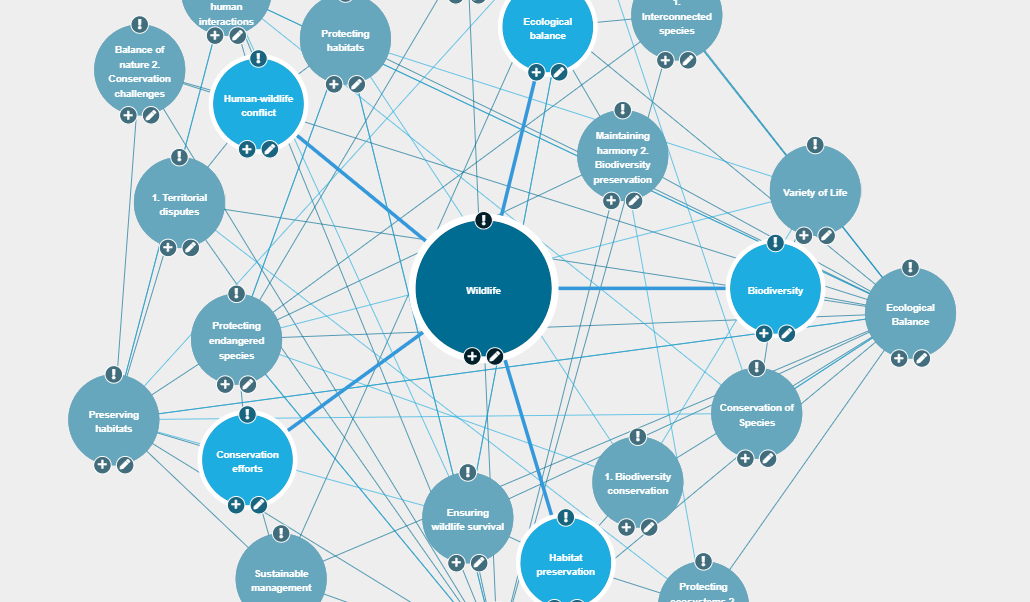Tapestry Tool – ML

Background
Tapestry Tool is an open-source online learning platform that allows users (such as students and instructors) to collaborate in the development of interactive, associative, and multi-modal content. Tapestry encourages a non-linear approach to learning as the tapestries are formed of nodes, which represent ideas through text, images, videos, or H5P content like an embedded quiz, flashcards, and more! It is the brainchild of principal investigator Dr. Steven Barnes and is supported by the University of British Columbia (through the TLEF grant) and the Microsoft Accessibility Team.
Objective
Currently, tapestry generation is done manually. Our goal for Tapestry here at EML is to use machine learning (ML) to automatically generate a tapestry, or web of interconnected content, based on a given topic. Instructors will then be able to generate tapestries automatically based on the desired learning outcomes for their course and then edit and prune the content. The integration of machine learning into Tapestry has various future implications, such as exploring relevancy between nodes or prompt engineering, that we hope to explore as we create and refine this prototype this term.
The Team
Principal Investigator(s)
- PI: Dr. Steven Barnes, Associate Professor of Teaching, Department of Psychology
Student Team
- Victoria Lim, Project Lead, UX/UI Designer (May 2023 – August 2023)
- Sophia Yang, Developer (May 2023 – August 2023)
- Grace Bell, Volunteer (May 2023 – August 2023)
- Jung Yi Cau, Volunteer (May 2023 – August 2023)